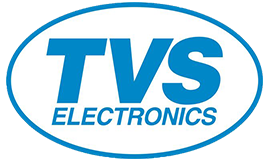CABLE TRACKER (Network Cable Detector, RJ45 RJ11)

A cable tracker or network cable detector is a tool used to identify and trace the path of cables in a network or electrical system. It can be particularly useful for network professionals, technicians, or anyone working with wiring to locate, test, and troubleshoot cables. These devices are often used to test the integrity and functionality of cables, such as RJ45 (Ethernet) and RJ11 (telephone) cables.
A cable tracker or network cable detector is a tool used to identify and trace the path of cables in a network or electrical system. It can be particularly useful for network professionals, technicians, or anyone working with wiring to locate, test, and troubleshoot cables. These devices are often used to test the integrity and functionality of cables, such as RJ45 (Ethernet) and RJ11 (telephone) cables.
Key Features of a Cable Tracker:
Cable Identification: It helps locate the correct cable in a bundle or between connected devices, ensuring you are working with the right cable.
Cable Testing: You can use the cable tracker to test for faults in cables such as broken wires, short circuits, or poor connections.
Signal Detection: For network cables (like RJ45), it detects signals or verifies if there is an active connection. This is especially useful for Ethernet cables to ensure they are working properly.
Wire Mapping: Some cable trackers can map the individual connections of each pin inside the connector (especially with RJ45). It helps confirm if all wires are correctly connected in the cable.
Dual Functionality: Many cable trackers work with both RJ45 (Ethernet cables) and RJ11 (telephone cables), offering versatility for different applications. They typically include separate adapters for different types of connectors.
Tone Generator and Probe: A common feature is the tone generator and probe method. The tone generator is connected to the cable at one end, and the probe is used to detect the signal along the cable, helping to trace its route or identify breaks.
Common Applications:
- Network Setup: Verifying Ethernet cables during installation or troubleshooting.
- Cable Identification: Finding specific cables in a bundle or a wall of wires.
- Troubleshooting: Detecting faults in cables like cuts, shorts, or pinouts in RJ45/RJ11 cables.
- Mapping Cable Routes: Locating the physical path of a cable in walls or conduits.
- Testing Connections: Ensuring there is no signal loss or damage in the cable.

























Add A Review
Your email address will not be published. Required fields are marked
Your Rating *
You need to Login OR Register